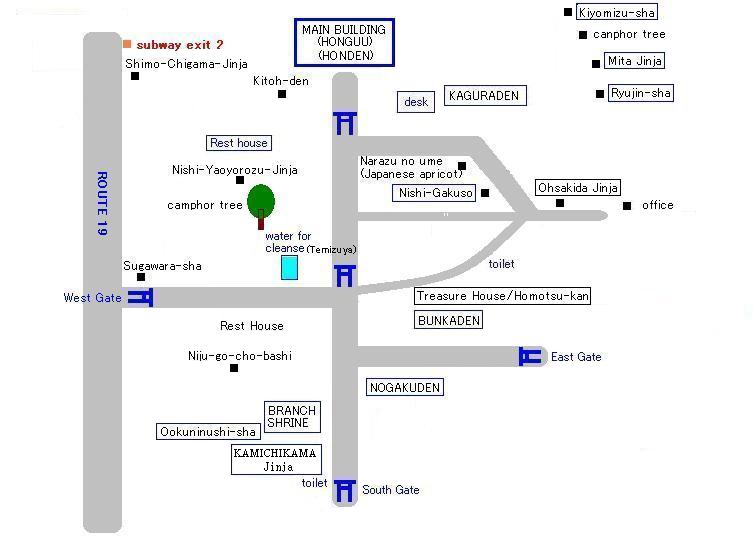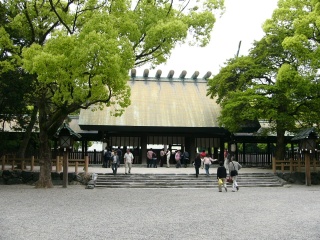|
ATSUTA-JINGU is one of the most important shrines following ISE JINGU shrine
in Japan.
AMATERASU-OMIKAMI, the goddess and the deification of the sun, is enshrined
the head deity.
The KUSANAGI-NO-MITSURUGI (the sacred grass-mowing sword) is kept here
as an object
of worship and believed to contain the spirit of a deity.
It is one of the three sacred treasures* that symbolize the Imperial throne.
They have many ceremonies throughout the year that you can watch or take
part in.
*The other two treasures are:
YATA-NO-KAGAMI--a large mirror. It is said that when Amaterasu-omikami hid
in the Amanoiwato rock cave, Ishikoridome-no-mikoto made and offered it
up to
Amaterasu-omikami.
It is kept in Ise Jingu (Ise Shrine) in Mie Pref. It is an object of worship
and believed to contain the spirit of a deity.
YASAKANI-NO-MAGATAMA--an accessory from ancient times.
When Amaterasu-omikami hid in the Amanoiwato rock cave, gods offered it
up to her.
It is kept in the Imperial Palace.
map of the shrine yard
|
 |
| Annual Shinto Ritual/Festival/Event Schedule |
|
|
| month |
date |
rituals, festivals, etc. |
| July |
Doyo-no
iri |
Miisha-sai |
| 31 |
Reinomimae-sha-sai |
| August |
- |
- |
| September |
Autumn
Equinox
Day |
Shuuki Koureisai |
| October |
1st
Sun |
Hikamianeko Jinja Reisai |
| 17 |
Niiname-sai |
| 17 |
Mita Jinja Niiname-sai |
| 20 |
Atsuta Ebisukousha
taisai |
| November |
1 |
Atsuta Kousha Shuuki Taisai |
| 3 |
Meiji-sai |
| 3 |
Housankai-taisai |
| 3 |
Ken'ei-sai |
| December |
20 |
Nougyo Kansha-sai |
| 23 |
Tencho-sai |
| 25 |
Osusu-osame Shinji |
| 31 |
Oharae |
| 31 |
Joya-sai |
|
Atsuta kagura
|


![]()